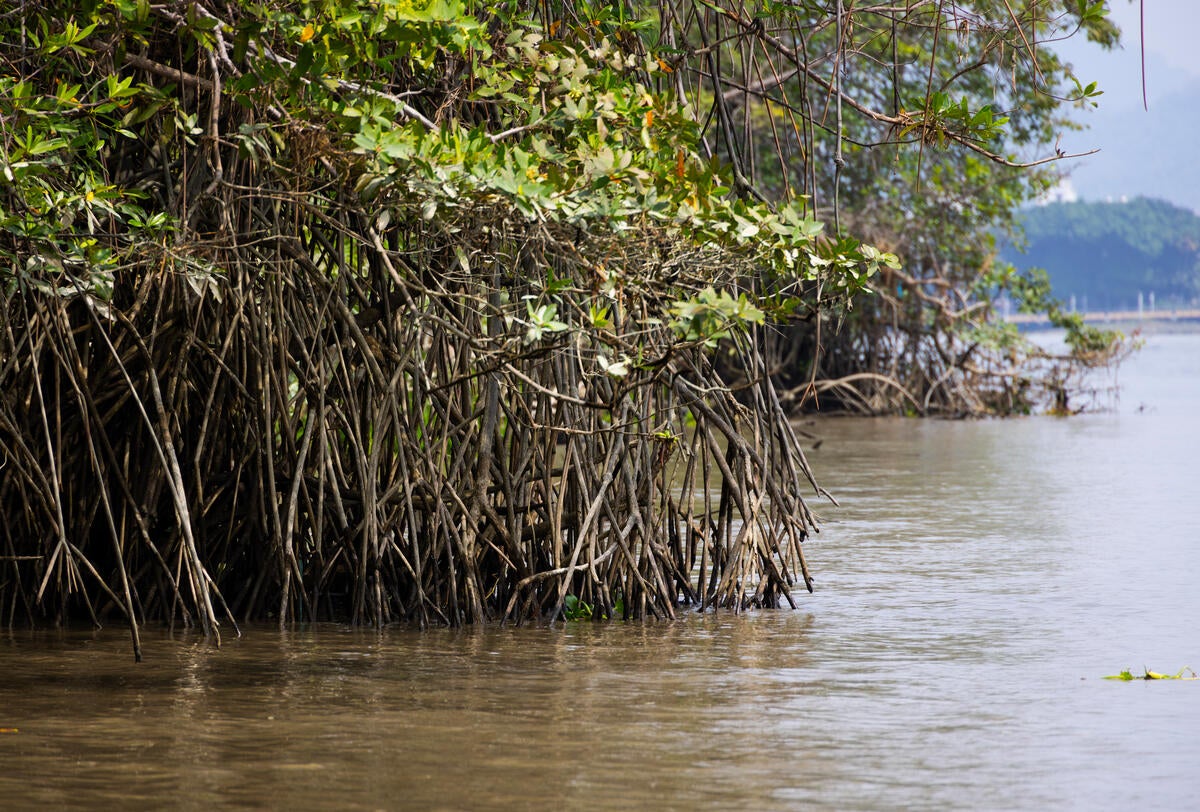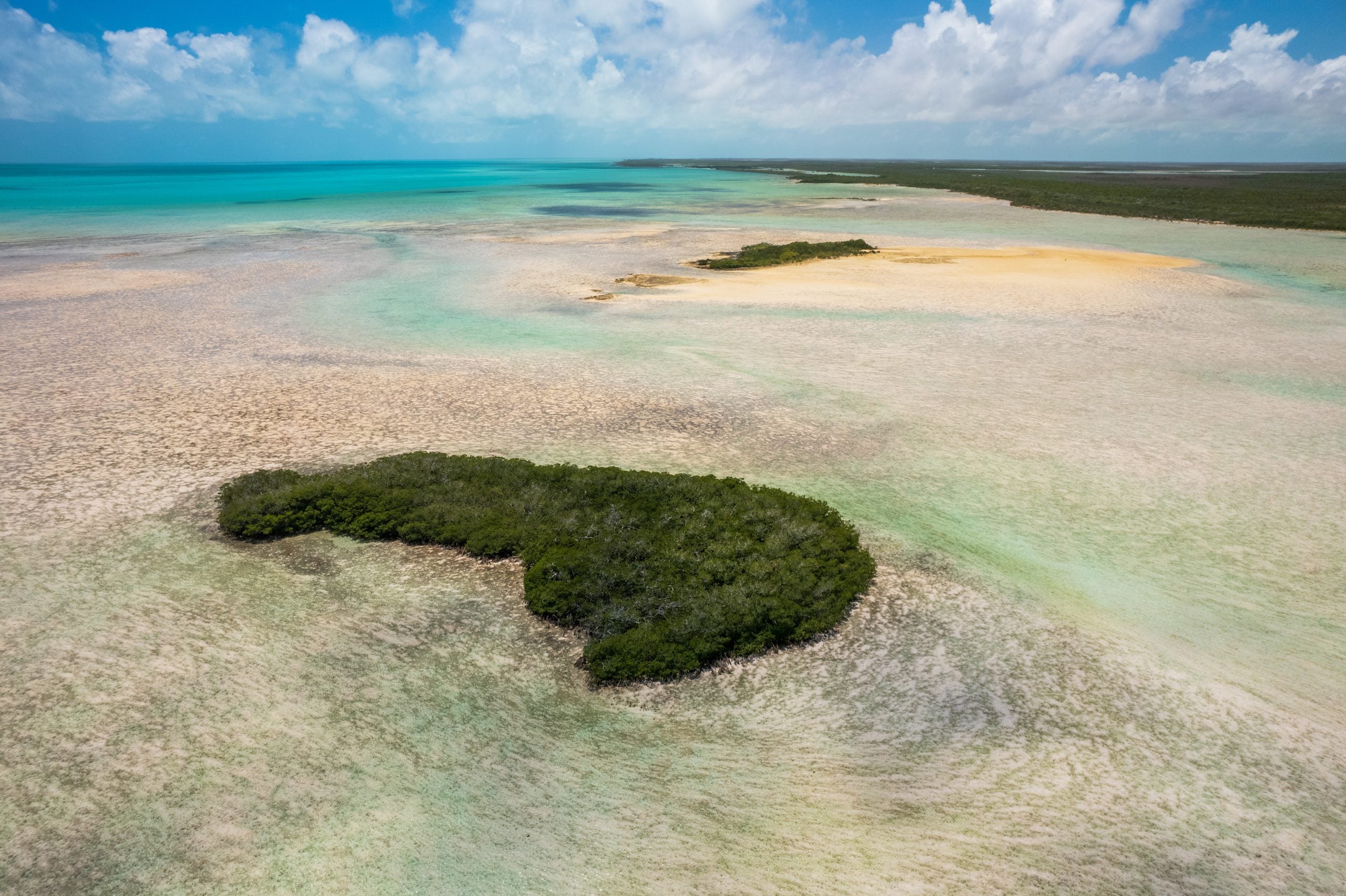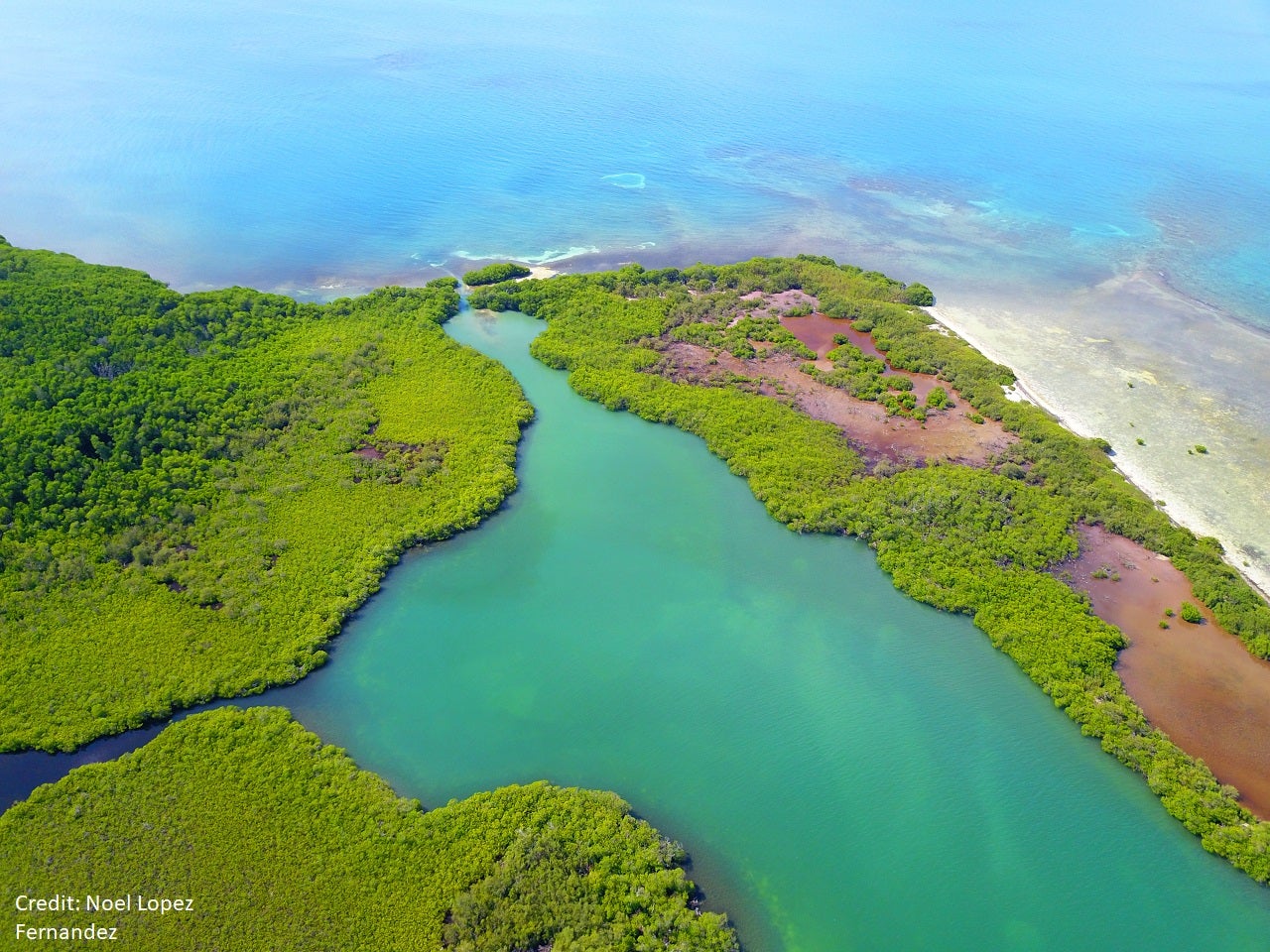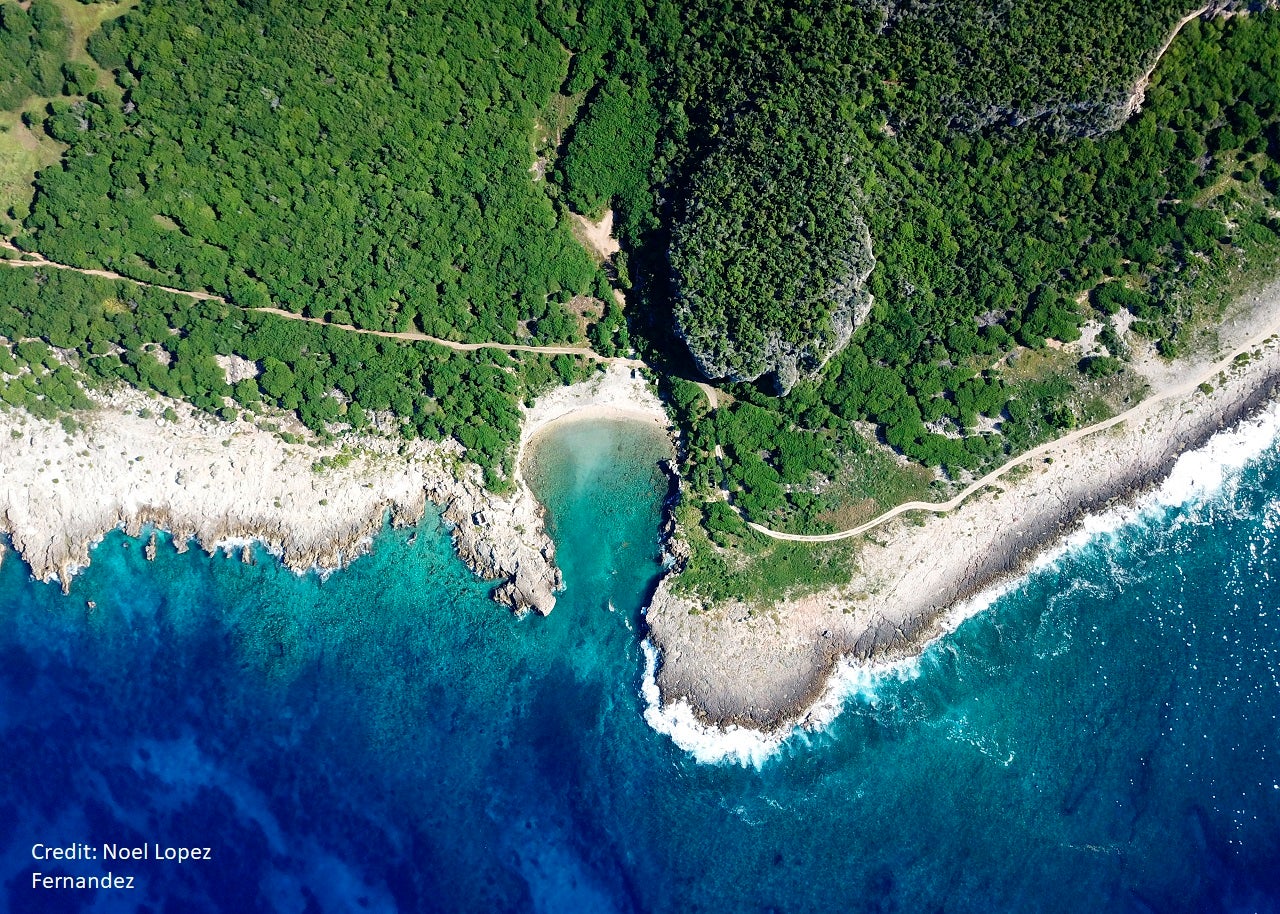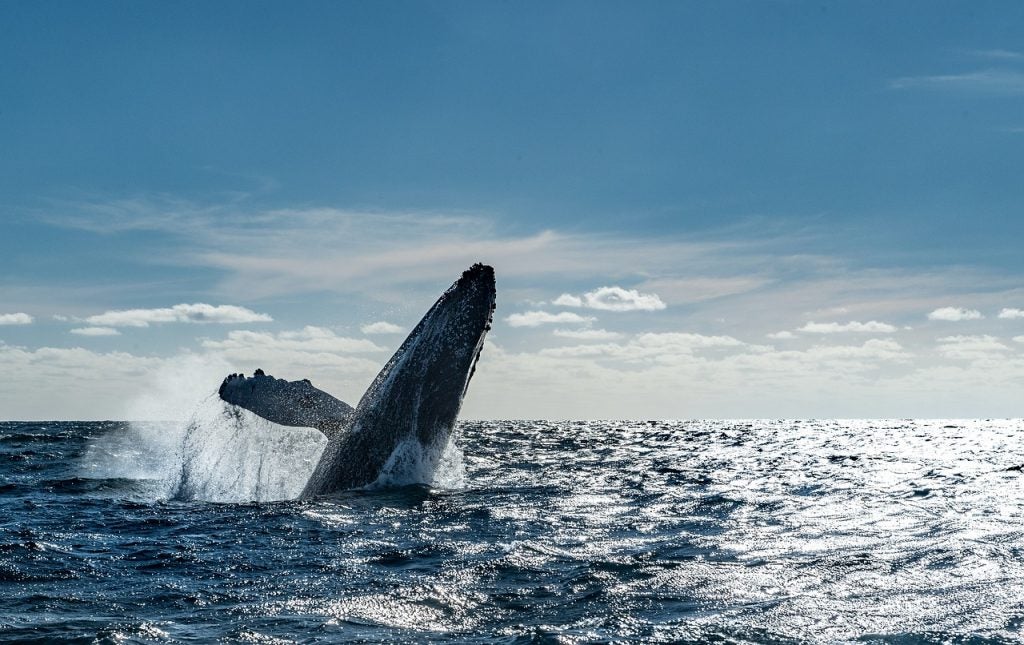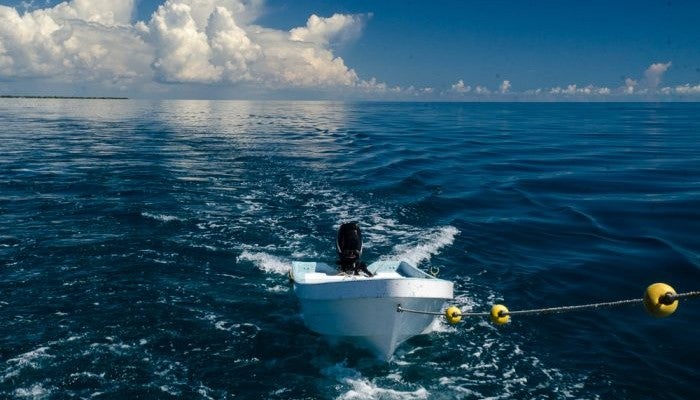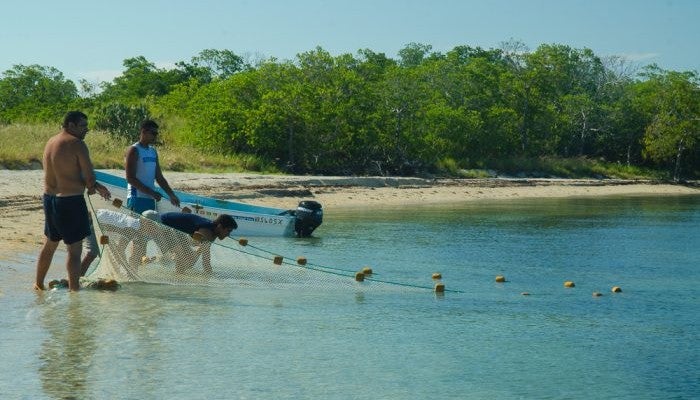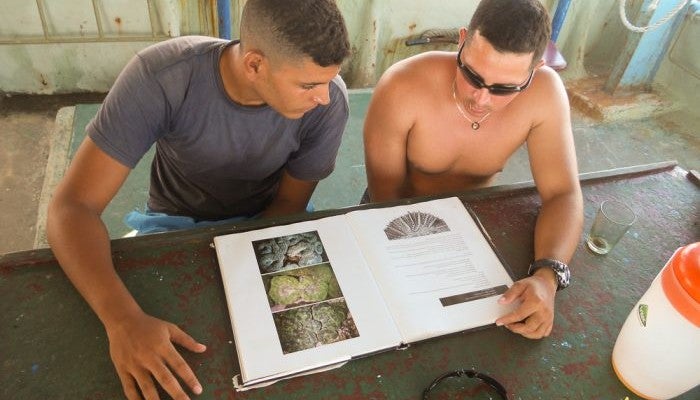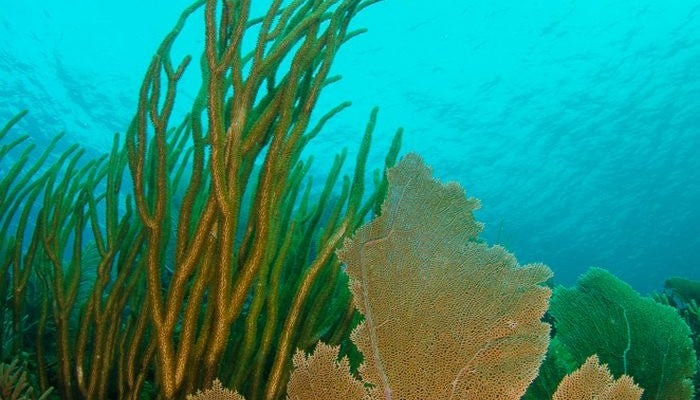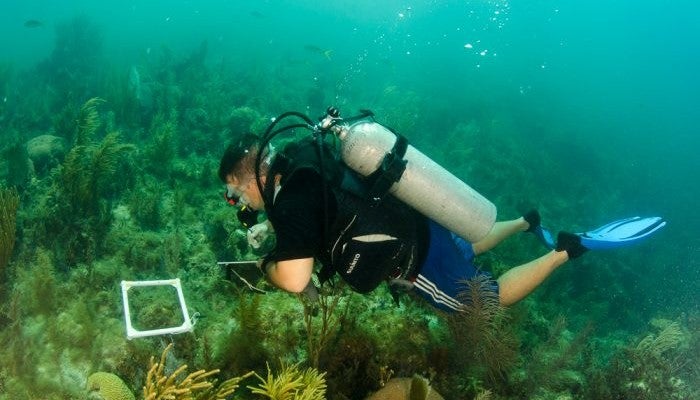This past August, in southern Ecuador amidst dense mangrove forests, scientists were at work. As I followed in her footsteps, Julie Shahan, a Stanford University Ph.D. student, navigated the challenging terrain, burdened by the large 25-pound piece of equipment on her back. This equipment, a gas analyzer, collects measurements to unlock the secrets of soil greenhouse gas emissions. This journey was a collaborative effort between Universidad Espíritu Santo (UEES), Stanford University, Scripps Institute of Oceanography and Environmental Defense Fund. Read More
EDFish
Selected tag(s): mangroves
Blending science and community to support mangrove restoration in Ecuador
Local knowledge is key to understanding climate impacts on fisheries
By Gemma Carroll, Jacob Eurich and Krista Sherman
Shervin Tate is a recreational fishing guide in The Bahamas, known locally as the Bonefish Specialist. He takes visiting anglers by boat to fish remote beaches and shallow water flats flanked by mangroves. The ultimate prize for his guests is landing and releasing a bonefish: pound for pound, one of the strongest sportfish in the world. Shervin assesses the conditions to select the perfect place to fish, then he and the angler scan the flats for where to target the next cast. Read More
Blue carbon: A better tomorrow begins below
By: Kristin M. Kleisner and Jamie Collins
As we embark this year on the United Nations Ocean Decade, you may be hearing quite a bit about blue carbon. But what is it, and why is it so important for the future of our planet? Well, the oceans play a critical role in trapping carbon, and they have absorbed about a third of all human-generated carbon emissions since the start of the Industrial Revolution. This is important because the carbon that human activity has released into the atmosphere acts as an accelerator of climate change.
When carbon is stored naturally in the various parts of ocean and coastal ecosystems — sequestering it, or taking it out of the atmosphere, where it could contribute to warming — we call it blue carbon. The blue carbon storage reservoir includes waters, sediments, and marine plants and animals. Unfortunately, loss of habitat, overfishing and other human impacts, including those from climate change, are reducing the ability of the oceans to trap carbon. That’s why we are exploring pathways to restore these benefits now and help to secure a better future for us all. You can learn more about blue carbon and some of the ways in which we may be able to restore key pathways using this interactive site. Read More
Natural climate solutions cut a steady course through a sea of proposals for ocean carbon dioxide reduction
When it comes to slowing the warming of our planet, there is no substitute for immediate, dramatic reductions in anthropogenic greenhouse gas emissions. But emissions reductions alone won’t be enough to limit warming to the 1.5 degrees Celsius goal at the heart of the 2015 Paris Agreement, or even to the Agreement’s upper limit of 2 degrees Celsius. In fact, we’ll almost certainly need to complement emissions reductions with big investments in carbon dioxide removal, or CDR, to capture and lock away some of the carbon dioxide we’ve already emitted.
Blue Carbon: a diamond in the rough
As the biosphere continues to warm and the ocean acidifies, solving the global carbon problem becomes more critical each day. Keeping temperatures to survivable levels requires reducing emissions while at the same time working aggressively to absorb as much carbon dioxide as possible, using approaches that can nurture natural ecosystems and help vulnerable human communities flourish. Read More
Establishing a biological and ecological baseline of Cuba’s coastal ecosystems
By: Kendra Karr & Owen Liu
A team of scientists from Cuba and EDF set sail on an expedition to assess the status and health of marine ecosystems of the Gulf of Ana Maria and the Gardens of the Queen marine reserve in southern Cuba, one of the most pristine and intact coral reef ecosystems in the Caribbean.
One morning we awoke to a small tuna boat pulling up alongside the RV Felipe Poey. The crew of the “Unidad ‘77” had been targeting bonito, a small tuna-like fish, south of the Gardens of the Queen marine reserve. EDF scientists were eager to tap into the captain’s localized knowledge, and peppered him with questions that were ably translated by CIM’s Patricia González. The captain described his fishing grounds, proudly displayed his catch and explained how his crew times their trips to coincide with certain phases of the moon. Before shoving off, the captain asked for some cooking oil for his next voyage. We traded oil for tuna and enjoyed fresh fish for many meals over the next few days.
A Scientific Baseline for Management:
Vessels like Unidad ‘77 are common in Cuba: small boats that work for the state, the livelihoods of their crews dependent upon a stable resource base. This and future expeditions will synthesize scientific findings to inform the management of Cuba’s marine resources. While our voyage was one of discovery, there were practical benefits too; the datasets we initiated will ultimately increase understanding of how ecosystems in Cuba work, which is essential to developing its coastal fishing economy in a sustainable manner.
Long-term monitoring programs are some of the most powerful tools that managers and scientists have to track and gauge ecosystem performance, variation and resilience. They generate baseline information about the status of a target species or ecosystem. In many cases, baseline information is used to analyze an impacted region after a major change (such as a disturbance either natural or human produced), or as reference data to compare between areas of interest; for example, to compare Cuba to other regions of the Caribbean that have been heavily impacted. Well-designed programs aid in evaluating impacts and help tailor recovery and management strategies. Additionally, long term monitoring data helps to identify areas that are more or less resilient to change over time. We can identify factors that enhance ecosystem health and resilience, as well as factors that have negative impacts.
But long-term fishery datasets are rare, and of those that exist, most are limited in their geographic scope. The data collected during this expedition and future trips represent a significant step forward for Cuba. Additional trips are planned in other regions of the country, alongside annual sampling across all of the monitoring regions including the Gardens of the Queen. Read More










